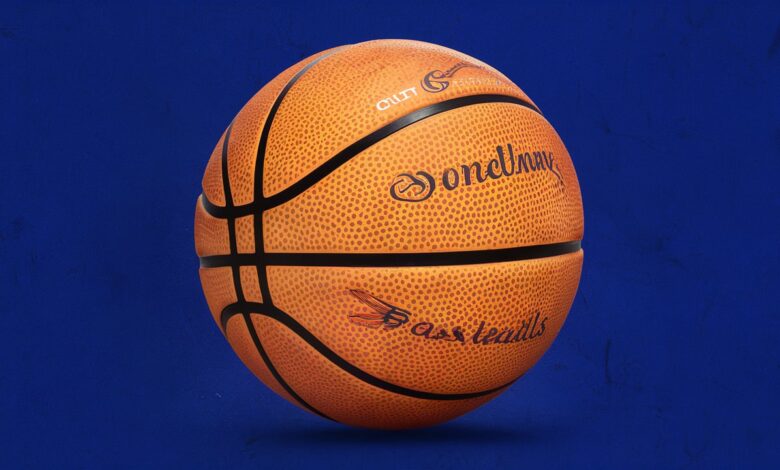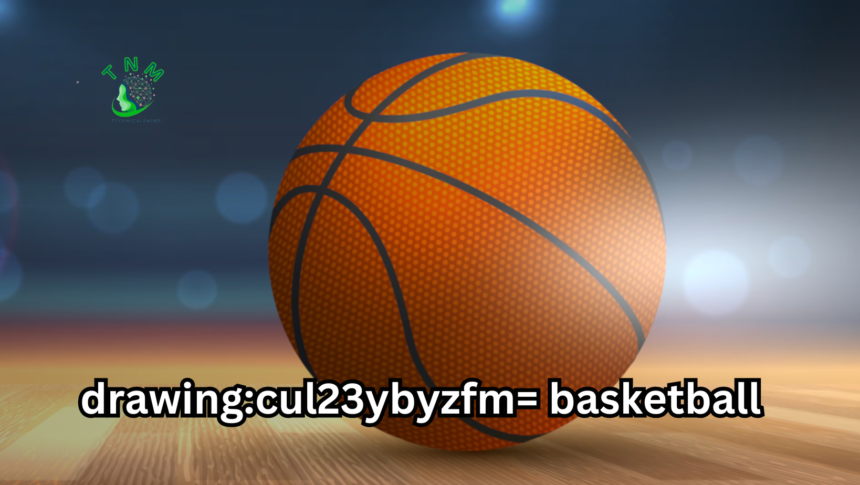The Art of Drawing drawing:cul23ybyzfm= basketball

Basketball is more than just adrawing:cul23ybyzfm= basketball ; it’s a dynamic blend of athleticism, strategy, and skill. Capturing this energy through art can be both challenging and rewarding. Whether you’re an aspiring artist or a seasoned pro, drawing:cul23ybyzfm= basketball basketball scenes can enhance your ability to depict movement, emotion, and action. In this comprehensive guide, we’ll explore various techniques and tips to help you master the art of drawing basketball.
Understanding the Basics of Basketball Anatomy

Before diving into drawing:cul23ybyzfm= basketball, it’s essential to understand the anatomy of basketball players and the game itself. Familiarizing yourself with the structure and proportions will help you create more accurate and dynamic drawings.
Studying Human Anatomy
Basketball players often have well-defined muscles, which are crucial to capture the essence of their movement. Start by studying human anatomy, focusing on the muscles most prominent in basketball players, such as the legs, arms, and torso. Use reference images or live models to observe how these muscles flex and extend during different actions like jumping, dribbling, and shooting.
Proportions and Scale
Understanding proportions is key to drawing:cul23ybyzfm= basketball realistic basketball players. The average height and build of a basketball player differ from those of an average person. Pay attention to the length of the limbs and the size of the hands and feet. Practice sketching these proportions until you can draw them confidently from memory.
The Basketball Court and Equipment
Familiarize yourself with the basketball court’s layout, including the key, three-point line, and the hoop. Understanding the dimensions and elements of the court will help you place your characters accurately in the scene. Additionally, study the basketball itself – its size, texture, and the way it interacts with players’ hands.
Capturing Motion and Dynamics
Basketball is a fast-paced sport, and capturing the motion and dynamics of the game can bring your drawing:cul23ybyzfm= basketball to life. Here are some techniques to help you depict movement effectively.
Gesture drawing:cul23ybyzfm= basketball
Gesture drawing:cul23ybyzfm= basketball is a quick and efficient way to capture the essence of a pose or movement. Use loose, fluid lines to sketch the basic action of the players. Focus on the overall flow and direction of the movement rather than the details. Gesture drawing helps you create a sense of energy and motion in your artwork.
Action Lines
Incorporate action lines to emphasize the direction of movement. These lines can guide the viewer’s eye and add dynamism to your drawing:cul23ybyzfm= basketball . For instance, if a player is jumping for a dunk, use curved lines to show the upward and downward motion, creating a sense of fluidity and speed.
Sequential Art
Creating a series of sequential drawing:cul23ybyzfm= basketball can help you understand and depict the stages of a movement. Break down complex actions like a slam dunk or a crossover dribble into key frames. This technique not only improves your understanding of the movement but also allows you to create more detailed and accurate drawings.
Detailing Faces and Expressions
The expressions and emotions of basketball players add depth and realism to your drawing:cul23ybyzfm= basketball. Capturing the intensity, joy, or frustration on a player’s face can make your artwork more engaging.
drawing:cul23ybyzfm= basketball Facial Features
Start by practicing the basic structure of the face, paying attention to the proportions and placement of the eyes, nose, mouth, and ears. Use reference images of basketball players to observe how their features vary and how expressions change during different moments in the game.
Expressing Emotion
Expressions in basketball are often intense and dynamic. Practice drawing:cul23ybyzfm= basketball various emotions such as determination, excitement, and disappointment. Focus on the eyes and mouth, as they are the most expressive parts of the face. Use shading and highlights to add depth and realism to the expressions.
Capturing Focus and Concentration
Basketball players often exhibit a high level of focus and concentration. Capture this intensity by emphasizing the eyes and the direction of their gaze. Whether they’re aiming for a shot or scanning the court for a pass, the eyes can convey a powerful sense of determination and strategy.
Mastering the Basketball Jersey and Uniform
drawing:cul23ybyzfm= basketball basketball jerseys and uniforms requires attention to detail and an understanding of how fabric behaves. The folds, creases, and movement of the jersey can add realism to your drawings.
Understanding Fabric Movement
Study how fabric moves and folds on the human body, especially during dynamic actions like jumping or running. Pay attention to the tension points where the fabric stretches and the areas where it bunches up. Practice drawing:cul23ybyzfm= basketball these folds to add realism to your basketball players’ uniforms.
Adding Texture and Details
Basketball jerseys often have distinct textures and details, such as team logos, player numbers, and sponsor patches. Use reference images to accurately depict these elements. Add shading and highlights to create a sense of depth and texture, making the jersey look more realistic.
Incorporating Team Colors
Team colors are an essential aspect of basketball uniforms. Use a color palette that matches the team you’re drawing:cul23ybyzfm= basketball , and pay attention to how the colors interact with light and shadow. Experiment with different shading techniques to create a sense of depth and vibrancy in the uniform.
Creating Dynamic Basketball Scenes
drawing:cul23ybyzfm= basketball individual players is just the beginning. Creating dynamic basketball scenes involves placing multiple players on the court, capturing interactions, and depicting the game’s flow.
Composing the Scene
Composition is crucial in creating engaging basketball scenes. Decide on the focal point of your drawing:cul23ybyzfm= basketball – it could be a player making a shot, a fierce defensive stance, or a fast break. Use the rule of thirds to place the focal point in a visually appealing position. Arrange the other players and elements around this focal point to create a balanced and dynamic composition.
Depicting Interactions
Basketball is a team sport, and interactions between players are essential to capture. Whether it’s a player setting a screen, a defender blocking a shot, or teammates celebrating a victory, these interactions add depth and realism to your scene. Practice drawing:cul23ybyzfm= basketball multiple figures interacting with each other, paying attention to body language and facial expressions.
Adding Background Elements
The background elements of your drawing can enhance the overall scene. Include details like the basketball hoop, audience, and court markings to create a complete and immersive environment. Use perspective techniques to ensure these elements are accurately placed and proportioned.
Utilizing Shading and Lighting
Shading and lighting are crucial in creating a sense of depth and realism in your drawings. Properly applying these techniques can make your basketball scenes more lifelike and engaging.
Understanding Light Sources
Identify the primary light source in your scene. It could be natural light, such as sunlight streaming through windows, or artificial light from stadium floodlights. Use this light source to determine where shadows and highlights fall on the players and the court.
Applying Shadows and Highlights
Shadows and highlights add depth and dimension to your drawings. Use a range of values, from light to dark, to create a realistic depiction of light and shadow. Pay attention to the direction and intensity of the light source, and apply shading accordingly. Practice blending techniques to create smooth transitions between light and dark areas.
Creating Reflective Surfaces
Basketballs, player jerseys, and the polished court floor can all have reflective surfaces. Use highlights to depict these reflections and add a sense of realism to your drawing. Study reference images to understand how light interacts with different surfaces and practice replicating these effects in your artwork.
Experimenting with Different Mediums
Experimenting with different art mediums can enhance your drawing skills and allow you to explore various styles and effects. Each medium offers unique possibilities for capturing the dynamic nature of basketball.
Pencil and Charcoal
Pencil and charcoal are excellent for creating detailed and textured drawings. Use these mediums to practice shading, blending, and creating realistic textures. Charcoal’s softness allows for smooth transitions between light and dark areas, making it ideal for depicting shadows and highlights.
Ink and Pen
Ink and pen offer a bold and graphic style. Use these mediums to create dynamic line work and strong contrasts. Experiment with different pen nibs and brush pens to achieve various line thicknesses and textures. Ink can be used to create detailed cross-hatching and stippling effects, adding depth and texture to your drawings.
Digital Art
Digital art provides endless possibilities for creating basketball drawings. Use digital tools like tablets and software to experiment with different brushes, colors, and effects. Digital art allows for easy corrections and adjustments, making it a versatile medium for both beginners and experienced artists.
Practicing and Improving Your Skills
Like any art form, improving your basketball drawing skills requires practice and dedication. Set aside regular time to practice, experiment with different techniques, and seek feedback from others.
Regular Practice
Consistency is key to improving your drawing skills. Set aside dedicated time each day or week to practice drawing basketball players and scenes. Use reference images, live models, and even videos of basketball games to study and replicate different poses and movements.
Seeking Feedback
Getting feedback from others can help you identify areas for improvement and gain new perspectives. Join art communities, share your work on social media, or take part in art classes and workshops. Constructive criticism from fellow artists can provide valuable insights and help you refine your techniques.
Experimenting and Innovating
Don’t be afraid to experiment with different styles, techniques, and mediums. Innovation can lead to unique and captivating artwork. Try combining different approaches, such as mixing traditional and digital mediums, or exploring abstract interpretations of basketball scenes.
Conclusion: The Journey of a Basketball Artist
Drawing basketball scenes is a rewarding journey that combines technical skills with creativity and passion. By understanding the anatomy, capturing motion, detailing expressions, and experimenting with different techniques and mediums, you can create dynamic and realistic basketball drawings. Remember, practice and dedication are essential to improving your skills. Embrace the challenges, seek feedback, and continuously push your artistic boundaries. With time and effort, you’ll be able to capture the excitement and energy of basketball in your artwork, creating pieces that resonate with viewers and celebrate the beauty of the game.





